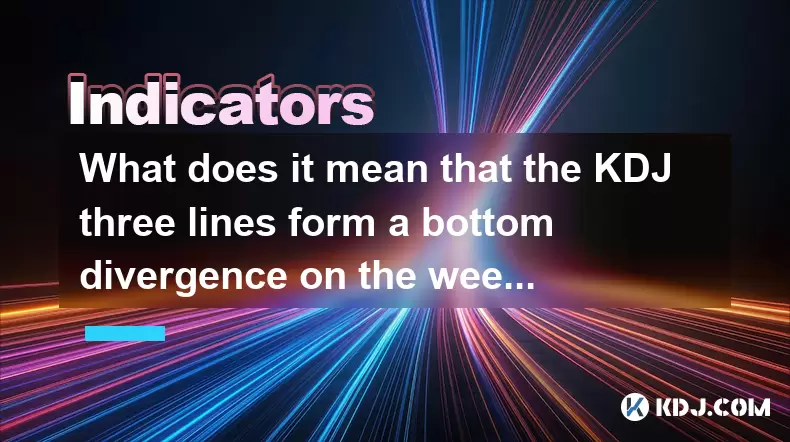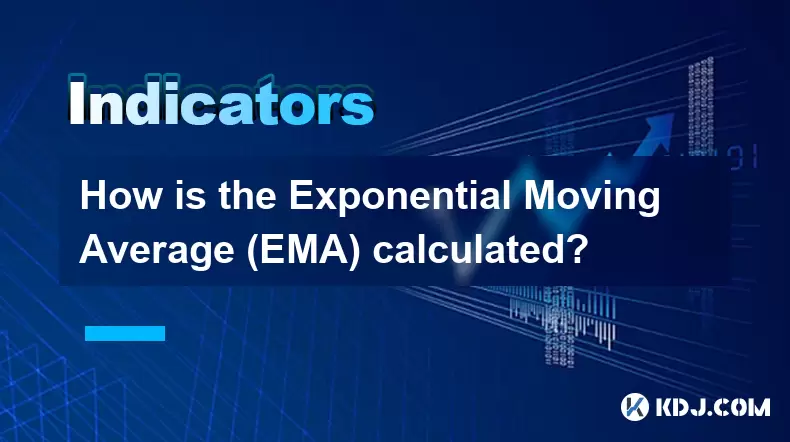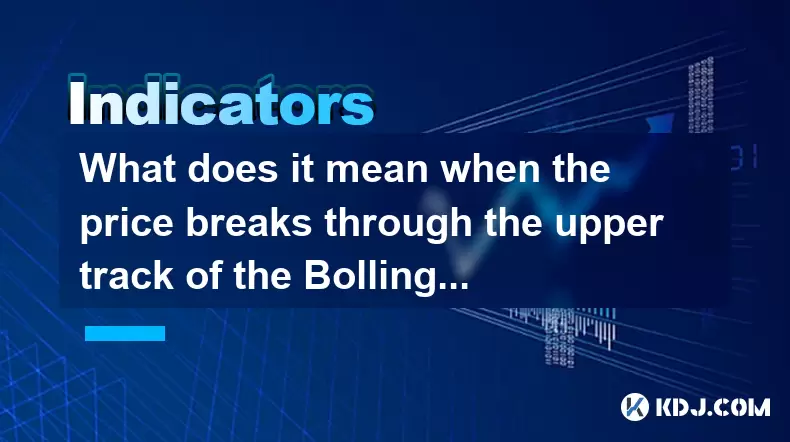-
 Bitcoin
Bitcoin $117500
-0.66% -
 Ethereum
Ethereum $3760
-1.24% -
 XRP
XRP $3.087
-2.54% -
 Tether USDt
Tether USDt $0.9999
-0.01% -
 BNB
BNB $803.6
-4.03% -
 Solana
Solana $180.3
-4.15% -
 USDC
USDC $0.9998
-0.01% -
 Dogecoin
Dogecoin $0.2218
-4.92% -
 TRON
TRON $0.3366
3.71% -
 Cardano
Cardano $0.7785
-3.73% -
 Hyperliquid
Hyperliquid $42.90
-4.75% -
 Sui
Sui $3.797
-7.45% -
 Stellar
Stellar $0.4165
-2.32% -
 Chainlink
Chainlink $17.65
-4.17% -
 Bitcoin Cash
Bitcoin Cash $561.0
-3.86% -
 Hedera
Hedera $0.2611
-4.54% -
 Avalanche
Avalanche $24.33
-7.02% -
 UNUS SED LEO
UNUS SED LEO $8.972
0.06% -
 Litecoin
Litecoin $107.6
-2.79% -
 Toncoin
Toncoin $3.254
-1.84% -
 Shiba Inu
Shiba Inu $0.00001306
-4.69% -
 Ethena USDe
Ethena USDe $1.001
0.00% -
 Uniswap
Uniswap $10.10
-4.83% -
 Polkadot
Polkadot $3.902
-4.63% -
 Monero
Monero $315.1
-2.57% -
 Dai
Dai $1.000
0.02% -
 Bitget Token
Bitget Token $4.499
-2.53% -
 Pepe
Pepe $0.00001145
-7.38% -
 Cronos
Cronos $0.1479
6.07% -
 Aave
Aave $281.3
-4.07%
What does it mean that the KDJ three lines form a bottom divergence on the weekly chart?
A KDJ bottom divergence on a weekly chart signals weakening bearish momentum, often foreshadowing a bullish reversal in crypto markets.
Jul 28, 2025 at 10:43 pm

Understanding KDJ Indicator Components
The KDJ indicator is a momentum oscillator widely used in cryptocurrency technical analysis to identify overbought or oversold conditions. It consists of three lines: the %K line, the %D line, and the %J line. The %K line is the fastest and reflects the current price momentum based on a selected period, typically 9 candles. The %D line is a moving average of %K, making it smoother and less reactive. The %J line represents a triple-exponential value derived from %K and %D, often used to detect extreme market conditions. In the context of a weekly chart, each data point represents a full week’s price action, offering a broader view of market trends compared to daily or hourly charts.
When traders refer to the three lines forming a pattern, they are observing the interaction between these three components. A key signal arises when the behavior of price contradicts the movement of the KDJ lines—this is known as divergence. Specifically, a bottom divergence occurs when the price makes a lower low, but the KDJ lines form a higher low, suggesting weakening downward momentum.
What Is Bottom Divergence in KDJ?
A bottom divergence on the KDJ indicator happens when the asset’s price records a new lower low, yet the KDJ values—particularly the %K or %D line—record a higher low. This discrepancy indicates that despite the price declining further, the underlying selling pressure is diminishing. In the cryptocurrency market, where volatility is high and sentiment shifts rapidly, such a signal can foreshadow a potential reversal from a downtrend to an uptrend.
On a weekly chart, this divergence carries more significance due to the longer time frame. Weekly candles consolidate seven days of trading data, filtering out much of the noise present in shorter intervals. When a bottom divergence appears here, it suggests that the broader market sentiment may be shifting after a prolonged bearish phase. The KDJ three lines clustering near the oversold zone (typically below 20) strengthens this signal, as it shows the market has been in a sustained downtrend and may be due for a correction.
How to Identify KDJ Bottom Divergence on a Weekly Chart
To detect a KDJ bottom divergence on a weekly chart, follow these steps:
- Open a cryptocurrency trading platform that supports KDJ, such as TradingView or Binance.
- Select the desired cryptocurrency pair, for example, BTC/USDT.
- Switch the chart time frame to "1W" (1 week).
- Apply the KDJ indicator with default settings (9,3,3) unless you have a customized configuration.
- Observe the price chart and the KDJ sub-window simultaneously.
- Identify two consecutive troughs in price where the second trough is lower than the first.
- Check the corresponding KDJ values at these troughs. If the KDJ value at the second trough is higher than at the first, a bottom divergence is confirmed.
- Confirm that the %K and %D lines are beginning to turn upward from the oversold region.
This process ensures that the divergence is not a false signal caused by short-term volatility. The weekly chart’s reduced noise increases the reliability of the pattern, especially when combined with volume analysis or support level confirmation.
Practical Example Using Bitcoin Weekly Chart
Consider a scenario where Bitcoin drops from $30,000 to $25,000 over several weeks, reaching a new low. In the following week, it dips further to $24,000. However, when examining the KDJ indicator:
- At the $25,000 low, the %K line was at 15, and the %D line was at 18.
- At the $24,000 low, the %K line rises to 22, and the %D line reaches 20.
Even though the price made a lower low, the KDJ lines formed a higher low. This is a classic bottom divergence. Additionally, the %J line may have crossed above %K, indicating accelerating bullish momentum. Traders might interpret this as a signal that sellers are losing control and buyers are starting to accumulate.
It is crucial to wait for confirmation—such as a close above the previous week’s high or a crossover of %K above %D—before acting. Entering a long position prematurely can lead to losses if the downtrend resumes.
Strategic Implications of Weekly KDJ Divergence
When a KDJ bottom divergence appears on the weekly chart, it suggests a potential shift in market dynamics. Cryptocurrency traders often use this signal to reassess their positions. For instance:
- Long-term investors may view this as an opportunity to initiate or increase holdings, especially if the divergence aligns with strong support levels or positive on-chain metrics.
- Swing traders might prepare for a potential upward move by setting entry orders just above the most recent weekly high.
- Risk management remains essential: placing a stop-loss below the latest price low helps protect against false breakouts.
The three-line convergence—where %K, %D, and %J begin to rise together from the oversold zone—adds strength to the signal. This alignment indicates coordinated momentum across all components of the KDJ, reducing the likelihood of a whipsaw.
Common Misinterpretations and Pitfalls
Traders must avoid mistaking a single oversold reading for a divergence. A true bottom divergence requires a comparison between two distinct price lows and their corresponding KDJ values. Another pitfall is ignoring the broader trend. A divergence in a strong bear market may result in only a temporary bounce, not a full reversal.
Additionally, not all exchanges display KDJ accurately on weekly charts, especially if historical data is incomplete. Always verify the integrity of the data source. Also, ensure the KDJ parameters are consistent—some platforms default to different periods, which can alter the signal.
Frequently Asked Questions
What if the KDJ lines are in the oversold zone but no divergence forms?
Being in the oversold zone alone does not guarantee a reversal. The KDJ can remain oversold for extended periods during strong downtrends. Without a divergence—where momentum improves while price makes a lower low—the signal lacks confirmation. Wait for price and indicator alignment before acting.
Can KDJ bottom divergence occur on other time frames?
Yes, it can appear on daily, 4-hour, or even 15-minute charts. However, the weekly chart divergence is considered more reliable due to its reduced sensitivity to short-term noise. Signals on lower time frames require additional confirmation and are more prone to false triggers.
Does KDJ divergence work the same across all cryptocurrencies?
The mechanics are identical, but effectiveness varies. Highly volatile altcoins may generate more false divergences due to pump-and-dump cycles. Major coins like BTC or ETH tend to produce more reliable signals because of their deeper liquidity and broader market participation.
Should I rely solely on KDJ for trading decisions?
No single indicator should be used in isolation. Combine KDJ divergence with other tools such as moving averages, RSI, or volume analysis. For example, a divergence coinciding with a breakout from a descending trendline or rising on-chain transactions increases the probability of a valid signal.
Disclaimer:info@kdj.com
The information provided is not trading advice. kdj.com does not assume any responsibility for any investments made based on the information provided in this article. Cryptocurrencies are highly volatile and it is highly recommended that you invest with caution after thorough research!
If you believe that the content used on this website infringes your copyright, please contact us immediately (info@kdj.com) and we will delete it promptly.
- Bitcoin Price Drop: Navigating the Dip with Corporate Strategies
- 2025-07-30 07:30:12
- BNB's Bullish Cycle: ChatGPT Weighs In on the Future
- 2025-07-30 06:50:12
- XRP's Wild Ride: Open Interest, Price Crash Fears, and What's Next
- 2025-07-30 07:50:12
- SEC Greenlights In-Kind Creations: A Game Changer for Bitcoin ETPs?
- 2025-07-30 07:50:12
- Arbitrum (ARB) Price Prediction: Navigating the Ups and Downs of the Best ETH Eco
- 2025-07-30 06:50:12
- Ethereum, Ruvi AI, Presale: The Next Big Thing in Crypto?
- 2025-07-30 07:30:12
Related knowledge

How is the Exponential Moving Average (EMA) calculated?
Jul 30,2025 at 10:35am
Understanding the Concept of Exponential Moving Average (EMA)The Exponential Moving Average (EMA) is a type of moving average that places a greater we...

What does it mean when the EMA combination crosses upward for the first time after sideways trading?
Jul 28,2025 at 03:43pm
Understanding the EMA and Its Role in Technical AnalysisThe Exponential Moving Average (EMA) is a widely used technical indicator in cryptocurrency tr...

What does it mean when the price breaks through the upper track of the Bollinger Band but the RSI is overbought?
Jul 30,2025 at 03:35am
Understanding Bollinger Bands and Their Upper TrackBollinger Bands are a widely used technical analysis tool developed by John Bollinger. They consist...

What signal does the ROC send when it rises rapidly from a low level and breaks through the zero axis?
Jul 27,2025 at 10:15am
Understanding the Rate of Change (ROC) IndicatorThe Rate of Change (ROC) is a momentum-based oscillator used in technical analysis to measure the perc...

What does it mean when the moving averages are glued together and a gap appears?
Jul 29,2025 at 07:49pm
Understanding Moving Averages in Cryptocurrency TradingMoving averages are among the most widely used technical indicators in the cryptocurrency tradi...

What does it mean when TEMA breaks through the long-term downward trend line?
Jul 29,2025 at 02:50pm
Understanding the Role of Smart Contracts in Decentralized Finance (DeFi)Smart contracts are self-executing agreements with the terms of the agreement...

How is the Exponential Moving Average (EMA) calculated?
Jul 30,2025 at 10:35am
Understanding the Concept of Exponential Moving Average (EMA)The Exponential Moving Average (EMA) is a type of moving average that places a greater we...

What does it mean when the EMA combination crosses upward for the first time after sideways trading?
Jul 28,2025 at 03:43pm
Understanding the EMA and Its Role in Technical AnalysisThe Exponential Moving Average (EMA) is a widely used technical indicator in cryptocurrency tr...

What does it mean when the price breaks through the upper track of the Bollinger Band but the RSI is overbought?
Jul 30,2025 at 03:35am
Understanding Bollinger Bands and Their Upper TrackBollinger Bands are a widely used technical analysis tool developed by John Bollinger. They consist...

What signal does the ROC send when it rises rapidly from a low level and breaks through the zero axis?
Jul 27,2025 at 10:15am
Understanding the Rate of Change (ROC) IndicatorThe Rate of Change (ROC) is a momentum-based oscillator used in technical analysis to measure the perc...

What does it mean when the moving averages are glued together and a gap appears?
Jul 29,2025 at 07:49pm
Understanding Moving Averages in Cryptocurrency TradingMoving averages are among the most widely used technical indicators in the cryptocurrency tradi...

What does it mean when TEMA breaks through the long-term downward trend line?
Jul 29,2025 at 02:50pm
Understanding the Role of Smart Contracts in Decentralized Finance (DeFi)Smart contracts are self-executing agreements with the terms of the agreement...
See all articles

























































































